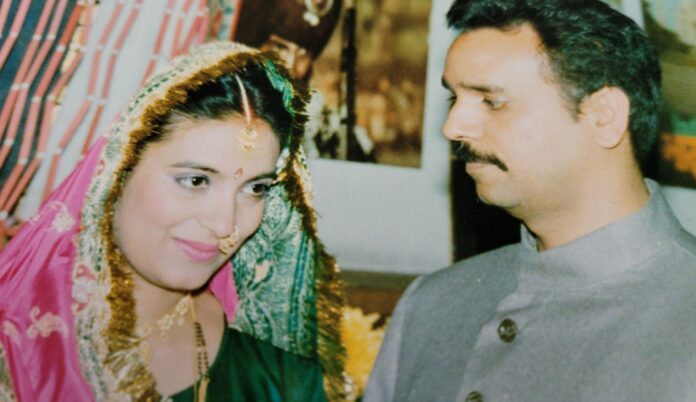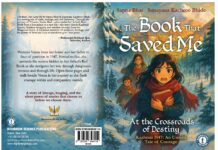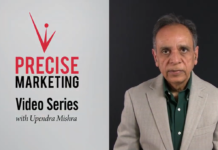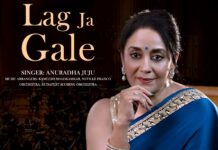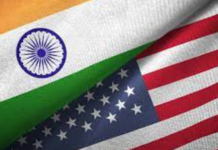By Upendra Mishra
BOSTON — Once I had found my footing in life—emotionally, spiritually, even professionally—I felt ready to take the plunge: marriage. After our engagement, the next big step loomed ahead with both excitement and anxiety.
The ceremonial wedding date was set for June 23, 1990, with a court marriage scheduled a few days earlier on June 19, at the Dedham Courthouse in Massachusetts.

But before all that, I was living in Mexico City, Mexico, finishing up work, and preparing for what would be the most important journey of my life.
I had planned to fly to Boston a week early to make final arrangements and mentally prepare for the ceremony. But unlike most grooms, I was to do it all without my family by my side. None of them could come from India. The cost of international travel was too high, and there were no passports. For many of them, even traveling to Delhi felt like going abroad. English was foreign. Visas were another planet altogether. The reality was brutal: I would get married without the presence of the very people who had raised me.
Still, there was something else I knew I had to do—something that had been playing in my mind ever since I was a boy watching Bollywood movies: I wanted to get married in a Sherwani.
The sherwani, for me, symbolized something more than just Indian tradition. It was graceful, dignified, almost royal. The way it combined Hindu and Muslim aesthetics—it spoke to me. Even now, I find Muslim etiquettes, their grace and depth, deeply fascinating.
But this raised a new problem: where the hell was I going to find a sherwani in Mexico?
That’s when Dr. Dhawan, a mentor I deeply admired, stepped in. “I have one you can borrow,” he said, pulling out a beautiful, old sherwani from his closet.
“But doctor sahib,” I said hesitantly, holding the garment against myself, “this won’t fit me… and it’s your wedding sherwani.”
“Yes,” he smiled, “but it’s a start.”
Inspired, I took it to a Mexican tailoring shop, hoping for a miracle. “¿Puede hacer esto igual pero a mi talla?” I asked the tailor, showing him Dr. Dhawan’s sherwani. “Can you make this exactly the same—but for my size?”
He examined it like it was a costume from an opera.
“This is very special?” he asked.
“Yes,” I replied, eyes pleading. “It’s for my wedding. Please.”
He nodded. “Lo haré con cuidado. I will make it carefully.”
A week later, the tailor handed me the finished sherwani. It was perfect. I held it in my hands and thought of that old saying: “Where there’s a will, there’s a way.”
But just as the excitement was peaking, a curveball hit. My in-laws, ever cautious and law-abiding, informed me that the Dedham Courthouse required a full health check-up for any international marriage. The test had to be done by a U.S. embassy-certified physician in Mexico City.
At first, I shrugged it off. No big deal, right? Then I saw the list of tests: AIDS, venereal diseases, tuberculosis, and others.
Suddenly, my mind spun into a black hole.
What if I fail the tests? What if something shows up? What if… I have AIDS?
I had no symptoms. I was healthy. But none of that mattered to my imagination. My thoughts spiraled.
What will I tell my fiancée? My family back home? My colleagues here in Mexico? Will they all think I’m diseased? Dirty?
AIDS was taboo back then. You didn’t talk about it. You feared it like death itself. My excitement vanished overnight. A thick fog of dread settled over me.
Maybe I should’ve just gone back to my village and married a local girl. Why did I dream so big? Why Boston? Why America?
But it was too late for second thoughts. The invitations were printed. The dates were fixed. The sherwani was ready. There was no backing out.
I forced myself to go to the U.S. Embassy, picked up the list of certified doctors, and scheduled an appointment.
The hospital visit was a blur. The nurse drew my blood. I barely heard her when she said, “Results will be ready in three days.”
Three days.
Those were, without exaggeration, the longest three days of my life. Days when every second felt like an hour, every thought a storm. The fear wrapped itself around me like a cold shroud, refusing to let go.
Even longer, even darker, than that day in my childhood when I first felt the ground fall out from under me—when I discovered that the woman I called “Amma“ wasn’t my real mother.
I was just eight years old. It happened in an instant—one cruel moment of childish rage. My cousin Gita, angry during a petty squabble, blurted it out like a weapon:
“She’s not your real mother! Your real mother died when you were a baby!”
That sentence hit me like a blow to the chest. My world, already fragile, collapsed inward. I stood frozen, unable to process the loss of someone I never got the chance to know—and the betrayal of a truth that had been hidden from me all my life. How do you mourn a mother whose face you don’t remember? How do you grieve something you never really had?
And now, all these years later, standing alone outside a hospital in Mexico City, I felt that same exact emotion—the same helplessness, the same disorientation, the same grief for something that might be lost before it ever fully came to life.
Back then, it was the loss of a mother I never knew.
Now, it was the imagined loss of a future I had just begun to believe in—the dream of marriage, of love, of a new life with the Banaras girl in Boston. The thought that a piece of paper, a test result, could take it all away, sent me spiraling into the same dark place I had once known as a child.
It wasn’t just fear of illness—it was fear of vanishing possibility, of losing what felt destined to be mine.
And just like back then, I had no one to ask, no one to lean on. Only the silence, the waiting, and the voice in my head whispering worst-case scenarios.
When I returned to collect my test results, my hands trembled. My knees buckled. My heart was pounding like a war drum. The nurse handed me the report.
“You’re perfectly healthy,” she said with a smile. “You passed everything.”
I didn’t smile back. I couldn’t. I walked out silently and sat on a bench nearby. I don’t know how long I sat there. I just remember thinking: I’ve been given another life.
I made a quiet vow that day: no more risky behavior. No shortcuts. No carelessness. Nothing is worth that kind of anxiety and fear.
With the health test behind me, the joy of the wedding returned, but a soft sadness lingered too—especially one thought I couldn’t shake: I wish my mother were alive to see this.
Of course, I would miss my entire family—my uncles, aunts, grandfather, cousins—but the longing for my mother was like a wound that never fully healed.
Growing up, I had believed my stepmother was my biological mother. That illusion shattered when Gita screamed the truth at me. After that, I never had the courage to ask anyone about my mother. There were no photographs. No memories. Nothing. She was a ghost that lived only in the silent corners of my mind.
Much later, when I was in 12th grade, my grandfather suggested I visit my mausi—my mother’s younger sister—in Deoria.
I had never met her. Didn’t know her face, or even her name. But I found her address and knocked on her door.
She opened it and squinted.
“Who are you?” she asked.
I touched her feet.
“I’m… Upendra.”
Time froze.
She stared at me. Her hands trembled. Then she collapsed into a chair and started sobbing. For nearly two hours, we sat there, in silence, both crying rivers. Her husband, my mausa ji, and her children watched in quiet disbelief.
Later, we shared dinner. She spoke about me as if she’d known everything all along. She had kept track of me through relatives, following my studies, my journey.
The next morning, I asked her softly, “Do you… have any picture of my mother?”
She searched for a while and brought me a faded black and white photo. It was a wedding scene. My mother was in the group—and I, a small baby, sat in her lap.
That was the first time I ever saw her face.
I stared at the photograph for hours. I had imagined her in clouds, in rivers, in reflections of water. But now—finally—I could see her. My mother.
I spent a week with my mausi. She told me many stories, but two stayed with me.
In one, my mother had come to her parental home with my six-month old baby sister. She was rocking the baby to sleep under the giant banyan tree. When some village friends came calling, she got up and walked off with them. I, still a toddler, noticed my sister sleeping alone.
When my mother returned, I reportedly scolded her in my little baby-words.
“She hugged you,” my mausi said, her voice breaking. “And she promised: I’ll never leave you and your sister alone again.”
But fate had other plans. A few months later, smallpox struck. My mother, my sister, and four other family members died. I survived.
The other story was quieter, yet even more heartbreaking.
My mother, my mausi told me, had loved clothes. She was always well-dressed. But after I was born, she stopped wearing new clothes.
“I’m saving those,” she would say, “for my daughter-in-law.”
Maybe that’s why, as my wedding journey to Boston began, and I almost ready to wear my carefully made sherwani, preparing to marry the woman I loved, the ache for my mother grew unbearable.
She never got to meet my wife. She never saw me grow. She never saw this dream—her dream for me—come true.
But I like to believe that somewhere, somehow, she knew.
What happened next in Boston was nothing I could have predicted.
Stay tuned for Chapter 24: The Marriage, the City, and the Moment That Changed Everything.
(Upendra Mishra is the author of After the Fall: How Owen Lost Everything and Found What Really Matters, and Precise Marketing: The Proven System for Growing Revenue in a Noisy World and the managing partner of The Mishra Group. He writes passionately about marketing, scriptures, and gardening. Learn more atwww.UpendraMishra.com.)


